- July 4, 2025
-
-
Loading

Loading
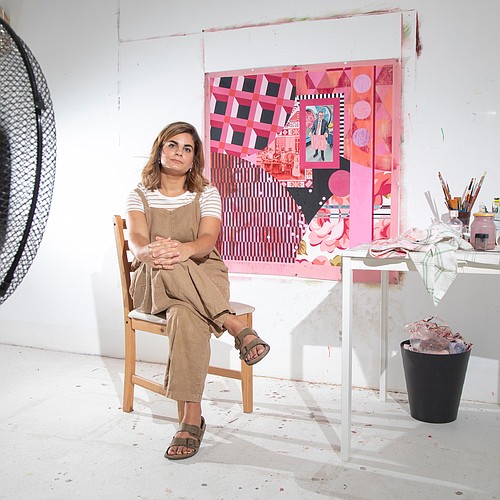
Luca Molnar’s latest painting series is a dense collision of patterns and historical personalities.
Her patterns flow from a range of spaces, both public and private. According to Molnar, “I’m captivated by the domestic environment and our everyday encounters with pattern in spaces like bathrooms and kitchens.”
She adds that while “home” is theoretically a sheltering safe space, it’s sometimes a workhouse for women’s often-unseen labors. “It can also be a battleground for intimate violence,” she adds. Molnar also confronts the exploitation of women in the workforce. The networks of power and politics aren’t in your face in her fractured narratives. To find them, the viewer must exercise their own powers of pattern recognition. Molnar takes the same approach as an assistant professor of studio art at Stetson University. She graciously connected the dots in our recent conversation.
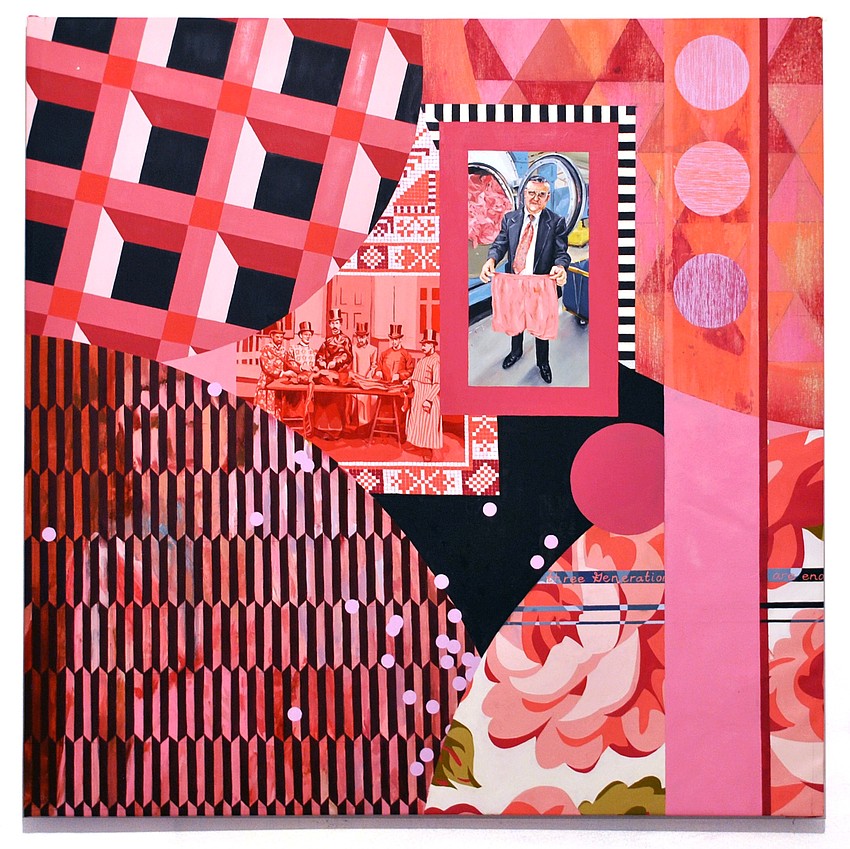
For me, it’s a process of inquiry. I’ll start with a narrative that interests me — and then keep digging in different directions to see what comes up. During this process, I begin to figure out how personal and political history intersects and influences the ideas and experiences of the present.
I’m interested in breaking the white cube. I want to give my paintings alternate spaces to exist beyond just white walls. That first started with the big yellow painting — “giornata.” I was inspired by Charlotte Perkins Gilman’s “The Yellow Wallpaper.” It’s a short story about Jane, a writer with unnamed postpartum depression. Her husband locks her up in an attic that’s covered in yellow wallpaper. Jane slowly descends into madness and feels consumed by it. This feeling of being enveloped and maybe even attacked by a color became very interesting to me. My monochrome series evokes that visual intensity. I’m not interested in subtle color. I want color that yells at you.
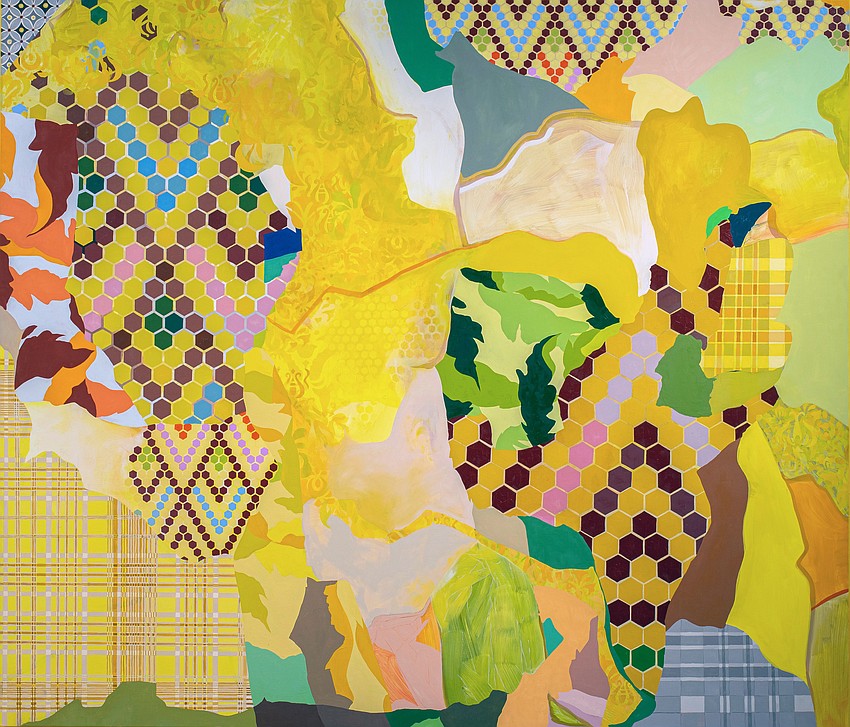
Eliza Lucas Pinckney is the focus of “Indigo Girls.” She’s a pretty interesting historical figure who’s credited with establishing indigo as a cash crop that thrived in South Carolina. Of course, she didn’t accomplish that on her own. She used the labor and knowledge of enslaved people to do it. “Baker-Miller Pink” refers to a shade of pink that’s very close to Pepto Bismol pink. In the '60s, the psychologist Alexander Schauss theorized that it had calming effect on people. It was first tested by Baker and Miller, the directors of a Seattle naval prison. They painted some cells that color and tracked what happened. It supposedly did calm prisoners down, but it was a pretty unscientific study.
The “Radium Girls” were the women who painted watch faces with luminous radium at watch factories — and developed horrific cancers. Many actually sued their employers and established workers’ right to collectively sue for environmental harm in the United States. Other figures like Marie Curie show up, too. But it’s an interesting cross-section of environment, gender and labor rights.
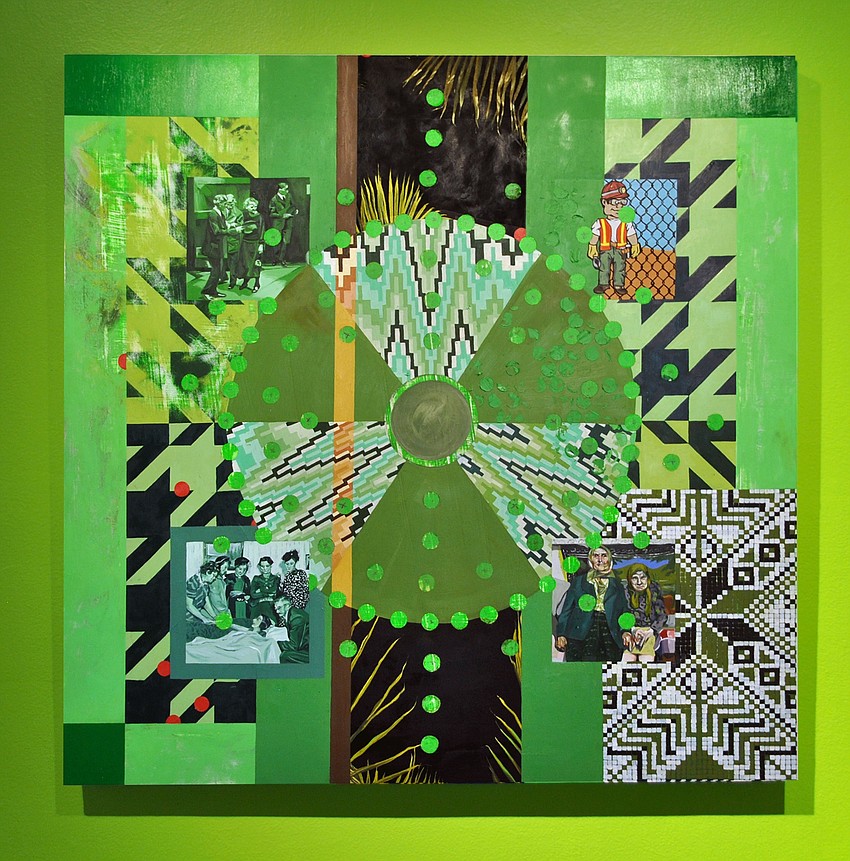
I relate to pattern in a conceptual realm. I think of patterns as individuals with unique personalities. Each pattern has its own internal logic, much like people. We each have our own ways of interpreting the world and interacting with each other. I’m interested in the dialogue you create when you put two competing patterns next to each other — or two similar patterns.
It’s a combination of intuition, memory and personal association. I was born in Hungary, and that resonates with me. So, I work with a lot of Hungarian patterns, from architecture to textiles. I also do historical research in the popular patterns of wallpaper, upholstery, or flooring at a certain time and place. So, if I’m creating an imagined space in for a 1970s woman California, I might investigate the kind of environment she would’ve inhabited. But, typically, I don’t pull the patterns from individual narratives.
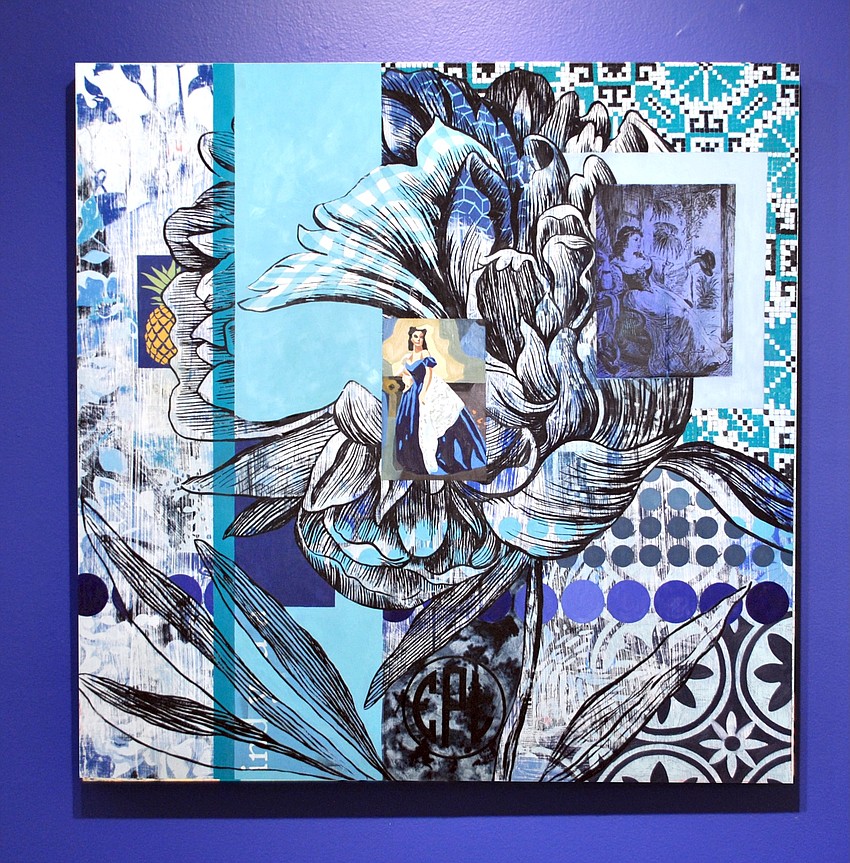
I've recently been inspired by Tomashi Jackson — a Black artist based in New York. Her paintings are very multimedia and incorporate see-through, plastic materials. Her approach to abstraction and historical narratives has influenced my work in many ways. In terms of color, I’m inspired by Kour Pour — an artist of Iranian descent who creates these nearly photorealistic textile paintings. They’re Persian rugs, but he sands their surfaces to make them look worn. The roughened quality he brings to textile has deeply influenced my work visually.
We tend to look at events and people singularly — in isolation. I think that looking at the connections between them can be beneficial. It’s really a kind of network thinking. Once you see the world this way, it brings more depth and nuance to things. And I hope my paintings might inspire that in the viewer.